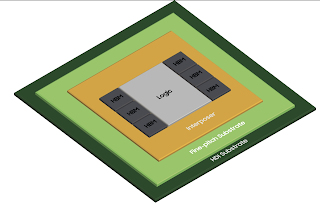Rockley Photonics has kicked off a research collaboration with Caltech’s Sensing to Intelligence (S2I) Center that will focus on the development of next-generation solutions that combine advanced sensors with artificial intelligence.
The S2I Center seeks to bring together two typically isolated disciplines — the field of sensing and imaging and the field of computation and algorithms — by adopting a holistic, interdisciplinary approach. The goal of bringing these two fields together is to develop more powerful and intelligent sensing systems and is wholly aligned with Rockley’s approach to health and wellness monitoring, which combines photonics-based sensor technologies with state-of-the-art artificial intelligence (AI) and data analytics.
Through its investment in S2I, Rockley plans to support a range of projects, including the development of new integrated spectrometer technologies using advanced photonics sensors. Researchers in the S2I center will explore and further analyze the relationship between spectral data and individual biomarkers to broaden and enhance the health monitoring capabilities and will utilize Rockley’s platform in the process.
Rockley Photonics and Caltech have collaborated previously on research projects including co-packaged optics and the co-design and integration of advanced photonics and electronics. This new agreement deepens an already strong association.
“Over the years, we have had a wonderful relationship with our Pasadena neighbors at Caltech, and it is an honor to continue our research agreement with them through the S2I Center,” said Dr. Andrew Rickman, chief executive officer and founder of Rockley Photonics. “Caltech has a strong history of supporting the development of health-related technologies, including Professor Arnold Beckman’s invention of the DU spectrophotometer, which was hailed as perhaps the most important instrument ever developed toward the advancement of bioscience. This new partnership will combine our experience building Rockley’s unique biomarker sensing platform, which incorporates a spectrophotometer-on-a-chip, with Caltech’s extensive research capabilities. We are happy to be working with Caltech once again to push the boundaries of bioscience even further.”
Rockley Photonics revealed its complete full-stack, “clinic-on-the-wrist” digital health sensor system based on its own spectroscopy technology. Rockley’s sensor module generates a large number of discrete laser outputs from a single silicon chip covering a broad optical band. The sensor non-invasively probes beneath the skin to analyze blood, interstitial fluids, and various layers of the dermis for constituents and physical phenomena of interest. The company says its device delivers several milliwatts of optical output power per wavelength channel, which is key to achieving the high signal-to-noise ratio required for signal analysis from a small wearable.
Rockley’s full-stack sensing solution features a wristband that contains the sensor module and communicates with custom cloud-based analytical engines via a Rockley smartphone app. The wristband will be used in a sequence of in-house human studies in the coming months.
“Our full-stack sensor solution, which brings together optical and electronic hardware, firmware, algorithms, and cloud-based analytics, is an exciting milestone on our roadmap. Our reference designs will significantly aid our customers and partners with the deployment of our technology and accelerate their own scalable, high-volume product delivery,” said Dr. Andrew Rickman, chief executive officer and founder of Rockley Photonics. “We believe that combining machine learning algorithms with continuous monitoring of an extended set of biomarkers from accessible wearable devices will provide new actionable insights to enhance and transform digital healthcare.”
https://rockleyphotonics.com/
























